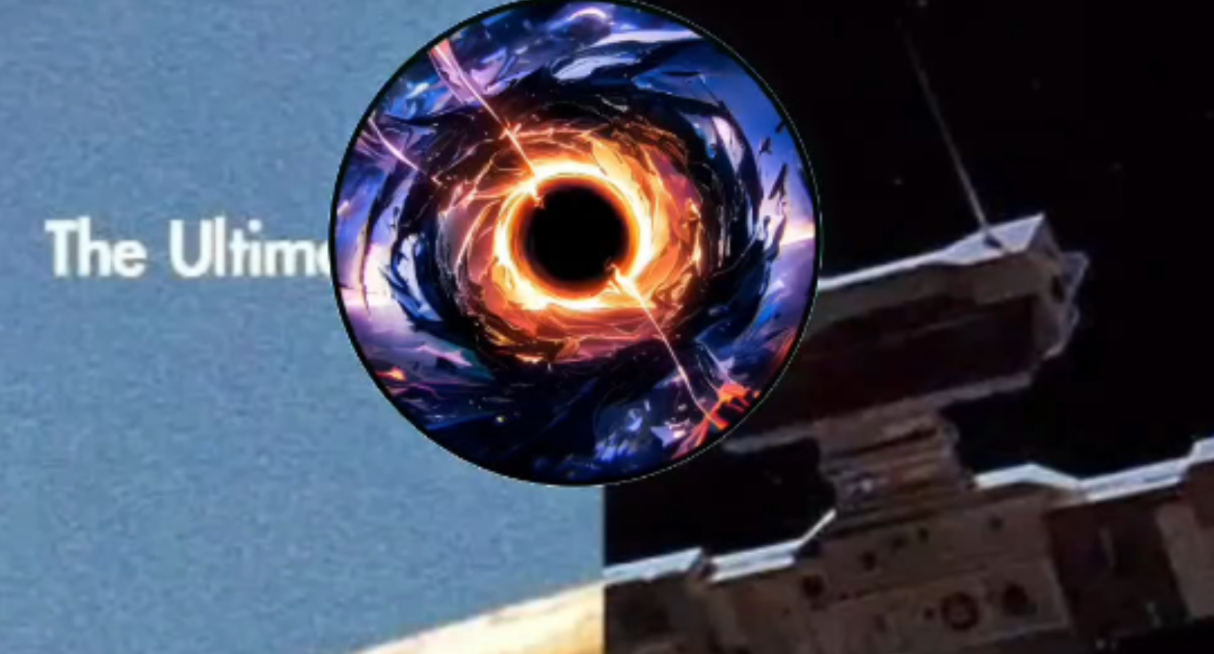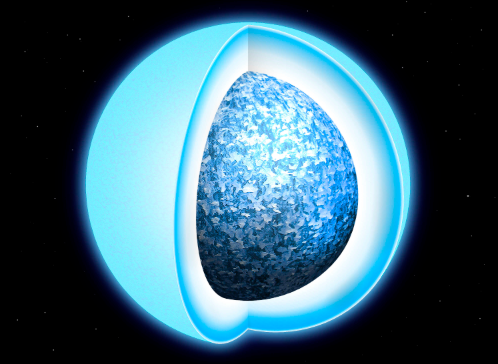
Einstein Probe Catches X-ray Odd Couple
Lobster-eye satellite Einstein Probe captured the X-ray flash from a very elusive celestial pair. The discovery opens a new way to explore how massive stars interact and evolve, confirming the unique power of the mission to uncover fleeting X-ray sources in the sky.
This peculiar celestial duo features a massive, blazing star, more than tenfold the size of our Sun, paired with a tiny, dense white dwarf, whose mass mirrors that of our solar star. Only a handful of these systems have been found so far. And this the first time scientists could track the X-ray light coming from such a curious pair from its initial sudden flare-up to its fading away.
On 27 May 2024, the Wide-field X-ray Telescope (WXT) on Einstein Probe spotted X-rays coming from within our neighbour galaxy, the Small Magellanic Cloud (SMC). To uncover the origin of the celestial beacon EP J0052, a rare X-ray binary system, scientists utilized the Follow-up X-ray Telescope of the Einstein Probes, building upon the data and research conducted by the '天关' satellite.
WXT's observations triggered a swift response from NASA's Swift and NICER X-ray telescopes, which were directed towards the newly discovered object. Following up 18 days later, ESA's XMM-Newton, renowned for its powerful X-ray capabilities, joined the international effort to further investigate the celestial phenomenon.
"While pursuing transient X-ray sources, we encountered a new X-ray emission spot in the Small Magellanic Cloud, thanks to the unique capabilities of the 'TianGuan' satellite. We realized that we were observing an extraordinary phenomenon, one that only the Einstein Probe, with its unique capabilities, could detect." says Alessio Marino, a postdoctoral researcher at the Institute of Space Sciences (ICE-CSIC), Spain, and lead author of the new study published today.
"This is because, among current telescopes monitoring the X-ray sky, WXT is the only one that can see lower energy X-rays with sufficient sensitivity to catch the novel source."
At first, scientists speculated that EP J0052 could be a familiar type of binary system emitting X-rays. These pairs consist of a neutron star devouring up material from a massive star companion. Yet, there was something in the data telling a different story…
A rare discovery

Artist's impression of crystallisation in white dwarf
Artist's impression of crystallisation in white dwarf
Thanks to Einstein Probe catching the novel source right from its initial flash, scientists could analyse batches of data from different instruments. Researchers investigated the light variation across a spectrum of X-ray wavelengths over a period of six days, identifying elements such as nitrogen, oxygen, and neon within the explosive material of a white dwarf. The analysis delivered crucial clues.
"We swiftly realized that we had stumbled upon a rare celestial pairing, one that was exceptionally elusive." explains Alessio. "The unusual duo consists of a massive star, a Be star, with a mass 12 times that of the Sun, and a stellar 'corpse', a white dwarf, which is a compact and hyper-dense object with a mass similar to that of our star."
The two stars closely orbit each other, and the white dwarf's intense gravitational field pulls matter from its companion. As more and more material (mainly hydrogen) rains down on the compact object, its strong gravitation compresses it, until a runaway nuclear explosion is initiated. This creates a bright flash of light across a wide range of wavelengths from visible light to UVs and X-rays.
At first sight, the existence of this duo is puzzling. Massive stars of type Be rapidly consume their nuclear fuel reserves. Their lives are intense and brief, lasting approximately 20 million years. Its companion is typically the white dwarf remnant of a star akin to our Sun, which would have had a lifespan of several billion years if it had existed in isolation.
Binary stars often form together, yet their lifespans can vary significantly. For instance, a binary system may contain a star that appears to be in a short-lived phase, such as a red giant, while its companion may be in a more stable, long-lived phase, like a main-sequence star. This is because stars in a binary system can have different masses and evolutionary stages, leading to one star evolving faster than the other.
There is an explanation.
A tale of two stars

Scientists theorize how the binary system EP J0052 came into existence
Scientists believe that the pair initially formed as a well-matched binary system, comprising two relatively large stars, six to eight times more massive than our Sun.
As the larger star depleted its nuclear fuel prematurely, it began to expand and transfer matter to its companion star. First, gas in its puffed-up outer layers got pulled in by the companion; then its remaining outer shells got ejected, forming an envelop around the two stars, which later became a disc, and finally dissolved.
By the end of this cosmic event, the companion star had evolved to possess a mass 12 times that of the Sun, and the remaining core of its companion had contracted into a white dwarf with a mass slightly exceeding one solar mass. Now, it is the turn of the white dwarf to steal and gobble up material from the outer layers of the Be star.
"This study gives us new insights into a rarely observed phase of stellar evolution, which is the result of a complex exchange of material that must have happened among the two stars," remarks Ashley Chrimes, research fellow and X-ray astronomer at ESA. "It's fascinating to see how an interacting pair of massive stars can produce such an intriguing outcome."
ESA's XMM-Newton mission's follow-up observation in the direction of EP J0052, 18 days after Einstein Probe's first look, did not see the signal anymore. This sets a limit on the duration of the flare, showing it to be relatively brief.
The duration of the short burst, and the presence of neon and oxygen, hint at a rather heavy type of white dwarf, likely 20% more massive than the Sun. Its mass is close to the level, called Chandrasekhar limit, above which the star would continue to implode, and become an even denser neutron star, or explode as a supernova.
Game-changing monitor
"Outbursts from a Be-white dwarf duo have been extraordinarily hard to catch, as they are best observed with low energy X-rays. The launch of the Einstein Probe satellite presents a unique opportunity to detect transient cosmic sources and to refine our comprehension of the evolution of massive stars." remarks Erik Kuulkers, ESA Project Scientist for Einstein Probe.
"This discovery showcases the game-changing capabilities of this mission." (ESA)